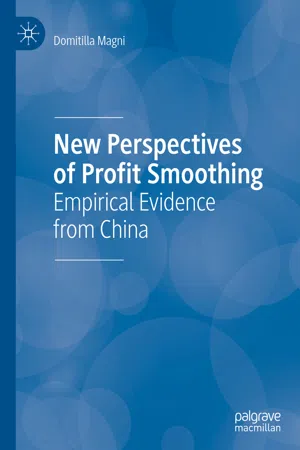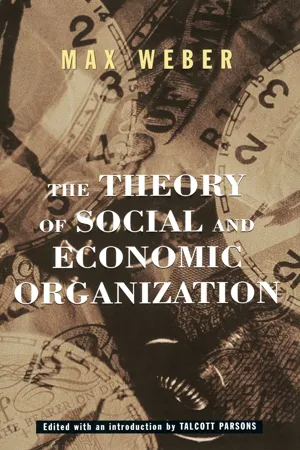Economics
Types of Profit
There are three main types of profit: accounting profit, economic profit, and normal profit. Accounting profit is the total revenue minus explicit costs, economic profit considers both explicit and implicit costs, and normal profit is the minimum level of profit needed to keep a firm in operation. Each type of profit provides a different perspective on a firm's financial performance.
Written by Perlego with AI-assistance
Related key terms
Related key terms
1 of 4
Related key terms
1 of 3
4 Key excerpts on "Types of Profit"
- eBook - ePub
New Perspectives of Profit Smoothing
Empirical Evidence from China
- Domitilla Magni(Author)
- 2019(Publication Date)
- Palgrave Macmillan(Publisher)
© The Author(s) 2019 Domitilla Magni New Perspectives of Profit Smoothing https://doi.org/10.1007/978-3-030-21286-5_1Begin Abstract1. Theory of Profit
Domitilla Magni1(1) Roma Tre University, Roma, Roma, ItalyEnd AbstractKeywords
Profit Classical economic view Neoclassical economic view Equilibrium Enterprise Income1.1 Profit in Traditional Argumentation Way
Profit can be defined as a form of income that may arise in an economy without a plan or a central authority that decides on the production and distribution of the social product. Profit’s definition does not end in only one conceptual category; rather, it is exposed to a variety of economic, social, cultural, and political uses and meanings. Any attempt to clarify the content of this notion removes the character of “absoluteness” and “neutrality” by unifying it uniquely to a particular economic vision.Economic science offers very different notions of profit, not only in relation to the economic and social relationships to which it refers, but also depending on the particular cognitive aim pursued from time to time, and the technique of analysis adopted.Economic profit theory should answer many questions, but the debate on this subject is still lit, and this reflects a sense of uncertainty and stalemate that characterizes all the literature on it. Profit has always been a multidimensional concept, which does not fall into one economic discipline. Besides having various basic arguments, profit is also a source of numerous studies and business techniques that are often outside from simple accounting - eBook - ePub
Entrepreneurial Finance
Fundamentals of Financial Planning and Management for Small Business
- M. J. Alhabeeb(Author)
- 2014(Publication Date)
- Wiley(Publisher)
CHAPTER 8PROFIT AND THE COST–VOLUME ANALYSIS8.1 Profit Concept Between Economics and Accounting
There is no doubt that “profit” is the most common and widely used term in the business world. However, the commonality and popularity of the term does not necessarily make it a clear concept with an unequivocal connotation. When the classical economics specified the four major factors of production as land, labor, capital, and entrepreneurial management, it also specified the payments these factors get for their individual contribution in the production process. These payments are respectively: rent, wages, interest, and profit. From here we can conclude that profit is the monetary return to those who initiate and manage the entrepreneurial function of production. If the first three payments (rent, wages, and interests) are made out of the product's sale revenue, the residual, if any, would constitute the fourth payment to the entrepreneur or owner as profit. It is in this sense we get the equality between profit and the net revenue since what we call profit is in fact the surplus over and above the costs of production. These costs may also include taxes, financing cost, and the like. Technically, profit would equal the difference between the total cost of production (TC) and the total revenue brought by the sale of products (TR).It is worthwhile to note here that while the term total revenue is a clear and well-defined concept, the total cost is less clear. Total revenue is the dollar value of the product sold, which is obtained by multiplying the quantity of the units of products sold by the market price per unit. Total cost could include only the explicit cost or the outlay such as the expenditures on the factor of production mentioned earlier and other direct payments such as taxes and interests on loans. If the total cost includes only the explicit cost (EC), the calculated profit would be considered as business or accountant's profit (πa - eBook - ePub
Wealth, Welfare and the Global Free Market
A Social Audit of Capitalist Economics
- Ibrahim Ozer Ertuna(Author)
- 2016(Publication Date)
- Gower(Publisher)
Under the assumptions of the capitalist free market economy, with prices developed in the perfectly competitive markets, theoretically, all the markets are cleared and factors of production receive their fair shares from the output. If the profits are considered as returns to entrepreneurial skills, entrepreneurs will get their proper share from the income generated. So the competitive markets provide full employment and fair returns to all factors. There may not be the problem of generating more or less income. But in real-life cases, there is a dilemma, since profit maximization may not necessarily lead to income maximization. In fact, companies’ decisions for profit maximization may well reduce countries’ national income. These issues will be discussed below. The Definition of Profit The concept of profit has different meanings in economics and accounting. In daily usage, the accounting concept is used. In economics, profit is the residual income left after payments are made for all the factors of production. As we have mentioned above, in free market economies, profits are eliminated: the value added that is created by production is totally distributed to the production factors. Every one of the production factors receives its appropriate returns. Economic theory assumes that firms earn revenues by selling the products they produce. As the firm sells more products, prices decline, so the contribution of additional sales to revenues will decrease. This additional revenue is called “marginal revenue” in economics. The costs of the products sold consist of both the costs of input materials and the factor costs. That is, the costs considered are costs of materials, labor, capital, and all relevant costs pertaining to the production and sale of the products. Again, under the assumptions of economics, the costs of additional production and sale follows first a decreasing, then an increasing trend. The additional cost is called “marginal cost” in economics - eBook - ePub
- Max Weber(Author)
- 2009(Publication Date)
- Free Press(Publisher)
5. Empirically the administration of budgetary units and profit-making are not mutually exclusive alternatives. The business of a consumers’ co-operative, for instance, is normally oriented to the economical provision for wants; but in the form of its activity, it tends to be a profit-making business without being oriented to profit as a substantive end. In the action of an individual, the two elements may be so intimately intertwined, and in the past have typically been so, that only the conclusion of the course of action, whether its product was sold or consumed, can serve as a basis for interpreting the meaning of the action. This has been particularly true of small peasants. Exchange may well be a part of the process of budgetary management where it is a matter of acquiring consumption goods by exchange and of disposing of surpluses. On the other hand, the budgetary economy of a prince or a landowner may, at least in part in the sense of the following discussion, be a profit-making enterprise. This has been true on a large scale in earlier times. Whole industries have developed out of the heterocephalous and heteronomous enterprises which landowners, monasteries, princes, etc., have established to exploit the products of their lands. All sorts of profit-making enterprises to-day are part of the economy of such units as local authorities or even states. In these cases it is legitimate to include in the ‘income’ of the units, if they are rationally administered, only the net profits of these enterprises. Conversely, it is possible for profit-making enterprises to establish various types of heteronomous budgetary units under their direction for such purposes as providing subsistence for slaves or wage workers—among them are ‘welfare’ organizations, housing and eating facilities. Net profits are money surpluses after the deduction of all money costs. See above, para. 2 of this section.6. It has been possible here to give only the most elementary starting points for analysing the significance of economic calculations in kind for general social development.11: THE CONCEPT AND TYPES OF PROFIT MAKING . THE ROLE OF CAPITAL
‘Profit-making’ (Erwerben)31 is activity which is oriented to opportunities for seeking new powers of control over goods on a single occasion, repeatedly, or continuously. ‘Profit-making activity’ is activity which is partly oriented to profit-making. Profit-making is economic if it is oriented to acquisition by peaceful methods. It may be oriented to the exploitation of market situations. ‘Means of profit’ (Erwerbsmittel) are those goods and other economic advantages which are used in the interests of economic profit-making. Exchange for profit is that which is oriented to market situations in order to increase control over goods, rather than to secure means for consumption. Credit may be extended as a means of increasing control over the necessary requisites of profit-making activity.There is a form of monetary accounting which is peculiar to rational economic profit-making; namely, ‘capital accounting.’ Capital accounting is the valuation and verification of opportunities for profit and of the success of profit-making activity. It involves the valuation of the total assets of the enterprise, whether these consist in goods in kind or in money, at the beginning of a period of activity; and the comparison of this with a similar valuation of the assets still present or newly acquired, at the end of the process. In the case of a profit-making organization operating continuously, it is a matter of accounting periods. But in any case, a balance is drawn between the initial and final states of the enterprise. ‘Capital’ is the sum of money in terms of which the means of profit-making which are available to the enterprise are valued. ‘Profit,’ and correspondingly ‘loss,’ is the difference between the valuations as revealed by the initial balance and that drawn at the conclusion of the period. ‘Capital risk’ is the estimated probability of loss as expressed in terms of a balance. A profit-making ‘enterprise’ (Unternehmen) is a system of action capable of autonomous orientation to capital accounting. This orientation takes place by means of calculation. On the one hand, there is a calculation, prior to actual action, of the probable risks and chances of profit; on the other hand, at the conclusion of a measure, verification of the actual profit or loss resulting. ‘Profitability’ (Rentabilität
Index pages curate the most relevant extracts from our library of academic textbooks. They’ve been created using an in-house natural language model (NLM), each adding context and meaning to key research topics.
Explore more topic indexes
Explore more topic indexes
1 of 6
Explore more topic indexes
1 of 4



